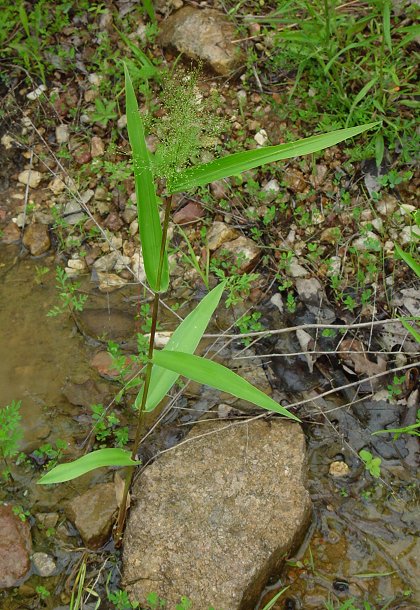Dichanthelium polyanthes (Schult.) Mohlenbr.
Panic Grass

Native
CC = 6
CW = 3
MOC = 0
© DETenaglia
Dichanthelium polyanthes (Schult.) Mohlenbr.Panic Grass | |
 |
Native CC = 6 CW = 3 MOC = 0 |
© DETenaglia |
|
Family - Poaceae/Paniceae Stems - To 60cm tall, erect, herbaceous, typically simple but sometimes branching in the fall, single or multiple from the base, glabrous. Nodes glabrous or with short appressed hairs. Leaves - Leaves of basal rosette different than those of the stem. Basal leaves elliptic. Cauline leaves linear-lanceolate, to +/-20cm long, +/-2.5cm broad, sheathing, rounded a the base, glabrous on the surfaces, with hairs on the margins near the base. Some of the hairs with pustulate bases. Sheath glabrous but hairy on the margins.
Inflorescence - A dense branching panicle to +10cm tall (long). Spikelets mostly at the tips of the panicle branches. The branches os the panicle mostly glabrous.
Flowers - Spikelets small, +/-1.5mm long, broadly elliptic to orbicular. Lower glume glabrous. Upper glume fine hairy (rarely glabrous), rounded at the apex, to 1.8mm long. Flowering - May - September or July - November. Habitat - Upland prairies, glades, ledges of bluffs, mesic to dry upland woods, bottoms, streambanks, disturbed sites, roadsides. Usually on acid substrates. Origin - Native to the U.S. Other info. - This species can be found mostly in the lower 2/3 of Missouri. The plant is fairly easy to ID in the field because of its dense inflorescence, tiny spikelets, and dimorphic leaves. Photographs taken on Stegal Mountain, MO., 7-15-03. |